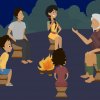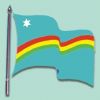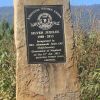The search found 29 results in 0.019 seconds.
Search results
Nagaland is home to nearly two million people consisting of 16 constituent major tribes that speak over 89 dialects (mostly mutually unintelligible between two tribes) and are without a common language and script.
According to the most famous legend regarding the Naga script, it was given to the people on animal skin which, when nobody was looking, was eaten by a dog leading to the script being lost forever. Certain variations to the legend also claim that the Assamese script was given on stone for which it endured as against the Naga script on animal hide which perished.
One of the first women to ever weave the Naga national flag, Lathon Kemp, passed away on the 5th of January, 2021. The news of her death brings to mind the flag and the very important place it holds in the life of the Nagas. Although, it was hoisted for the first time on the 22nd of March in 1956 in the Parashen-Rengma region, the Nagas believe the flag to have a divine origin and not designed by any mortal. A red, green and yellow rainbow is spread out against a field of blue which represents the sky.
In 1904, the United States introduced Filipino culture to the American public with their Philippine Exposition at the St. Louis World’s Fair, a faux recreation of indigenous Filipino villages located at the outskirts of the exhibition fairgrounds and populated with various indigenous Filipino tribes from across its various islands, the most well-known being of the Ifugao people of northern Luzon, referred to at the time as Igorots (Taft, 1904, 29-30).
Magtanim Ay ‘Di Biro or ‘Planting is not a joke’ is an old children’s song from the Philippines, often sung as a nursery school rhyme. While it is considered by many (including my own family growing up) as a traditional song, the origins of the rhyme are much more recent, as I found out after being inspired by another accession card discussing Surinamese children's rhymes.
When the day came to be, Kohima was resplendent in sunshine. It was January 10, 2018, the first Naga Day. At the Kohima Local Ground, Khuochiezie, music played from the early morning hours.In the surrounding market area, people hummed the tunes as they set up shop. Some planned to go to the ground, some planned to watch from their terraces—everyone had heard this one thing, Nagas from everywhere were coming together.
This song "Rise, Naga Woman" composed by Theyiesinuo Keditsu, music by Khyochano TCK and Topeni as soloist, was chosen as the winner for the ‘State Theme Song for Women’ and was released by the State Resource Centre for Women (SRCW) under the aegis of the Nagaland State Social Welfare Board (NSSWB) during a program organised to observe the International Day for the elimination of violence against women.
The song speaks to Naga women and asks them to spread their wings and rise up against discrimination and inspire all of Nagaland and take them to a glorious future.
In urban and suburban Nagaland, as in many of the conflict-affected regions of India's North-East, such signs calling into action people and collectives are commonly visible. In this poster, the church as site of popular resistance is agency for mobilisation of constituencies such as the youth towards a unified struggle for the Naga nation.
Phool Walon Ki Sair meaning "procession of the florists" is an annual celebration by the flowers sellers of Delhi. It is a three-day festival, generally held just after the rainy season in the region of Mehrauli. The grand procession that followed Mirza Jahangir’s return in 1812 witnessed the flower sellers of the city bringing floral chadar (sheets) and pankha (fan) as offerings. This became an annual event, with a large fair and a series of cultural performances held near Shamsi Talab.
In the remote Naga hills , beyond the capital city of Kohima, stands the beautiful and historic village of Khonoma. Traditionally a site of resistance, having pushed back British rule in the region from the 1830s to 1880, Khonoma continues to be a space striving towards safeguarding the rights of women while strengthening Naga unity through organisations like the Khonoma Women Union, in whose honour this obelisk stands marking its 25 years in 2013.
Pages










